How to install Moodle
- Category : cPanel Software Management
- Posted on : Feb 18, 2020
- Views : 1,413
- By : HostSEO

Moodle is a learning platform designed to provide educators, administrators, and learners with a robust, secure, and integrated system to create personalized learning environments. With over 10 years of development, guided by social constructionist pedagogy, Moodle delivers a powerful set of learner-centric tools and collaborative learning environments that empower both teaching and learning. A simple interface, drag-and-drop features, and well-documented resources, along with ongoing usability improvements, make Moodle easy to use and learn from.
There are two ways to install Moodle:
1) installation via Secure Socket Shell (SSH);
2) web-based installation.
Step 1 - Placing the installation files
First and foremost, you need to download the necessary installation files from the Moodle website.
NOTE: In this article, we install Moodle version 3.5.1. You are free to use any other version; however, it may require you to take different steps to correctly install Moodle.
Once youâ$™ve downloaded the necessary archive, you will need to upload it to the domain root directory so your version of Moodle can be installed. In our case, weâ$™re installing Moodle on nctest.info, which is the main domain of the hosting account. If you would like to install it with an addon domain, check the domainâ$™s root directory here: cPanel >> the Domains section >> the Addon Domains menu. See below:
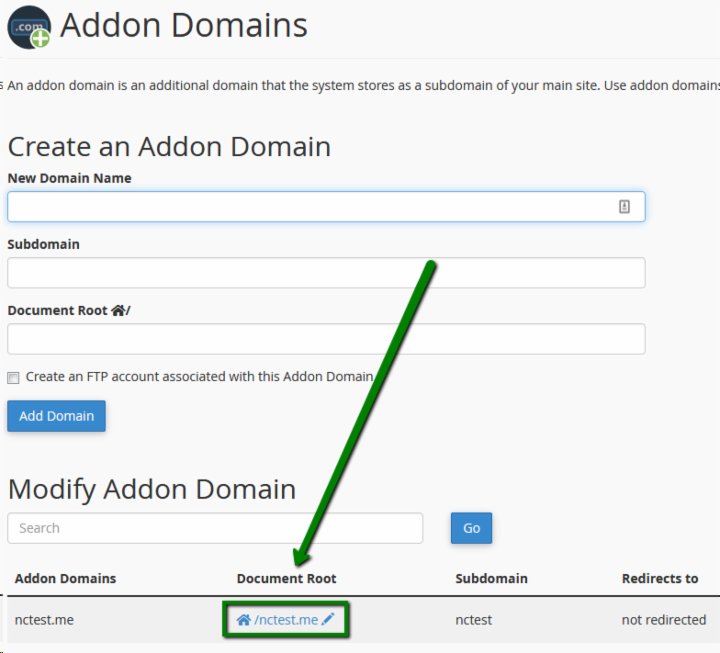
When you know the root directory of your domain name, you can upload the archive via cPanel >> File manager >> Upload or via an FTP client as described here.
The next step? Extracting the files.
1. Navigate to cPanel >> the Files section >> File manager.
Youâ$™ll be automatically taken to the home directory.
3. Click on the archive to select it and click the Extract button located on the top navigation panel.
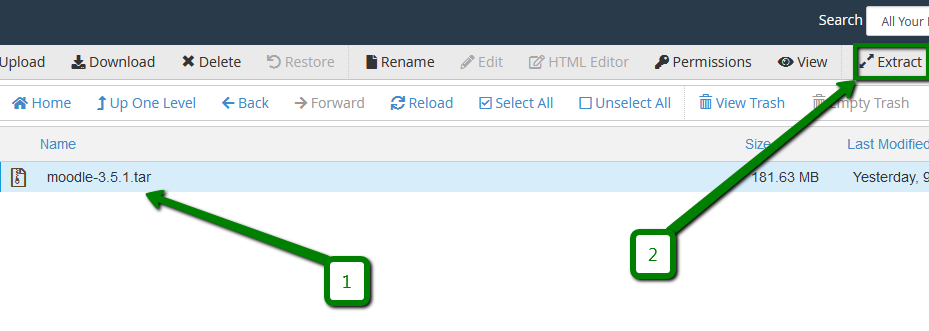
4. In the pop-up window, click the Extract File(s) button. By default, files are extracted into the folder where the archive is located, so there is no need to change anything.
The files of this archive are extracted as a folder; this means that the files are located not in the root directory of the domain, but in the subdirectory. See below:
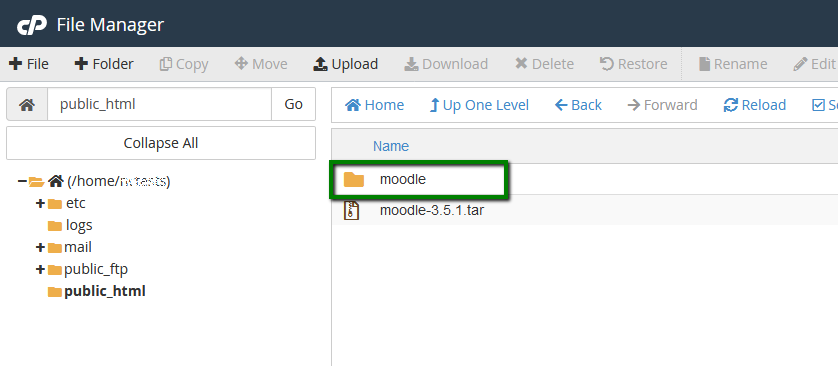
6. Now you need to remove files from the /moodle folder into the folder you are currently in. To do this, click on the /moodle folder, select all the files and click the Move button on the top navigation panel. See below:
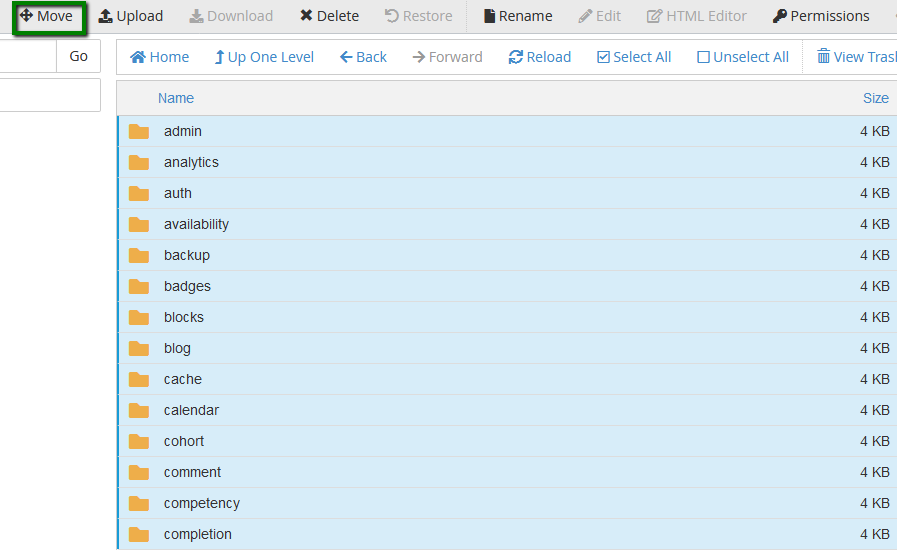
7. In the pop-up window that appears after clicking the Move button, delete the name of the folder "moodle" from the path and click on the Move File(s) button:
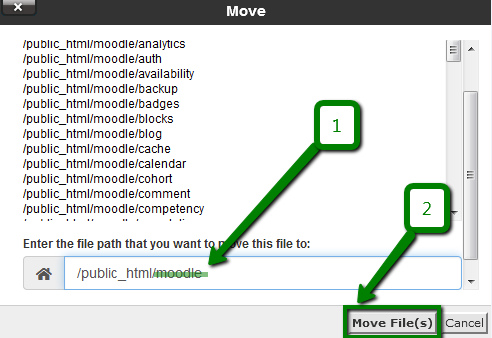
If the files were successfully moved, you should see an empty folder.
To check that the files are now there, go back to the domainâ$™s root folder.
Step 2 - Configuring the Environment
Each file and folder located in your account has certain permissions assigned to them. They define who is authorized to write, read, or execute that file. On our servers, to properly display the browserâ$™s files, use permissions 644, folders - with 755.
To make sure that the files you have uploaded contain the correct permissions, follow this procedure.
With the permissions in place, itâ$™s time to configure PHP environment for the installation.
1. Navigate to cPanel >> the Software section >> Select PHP Version menu. See below:
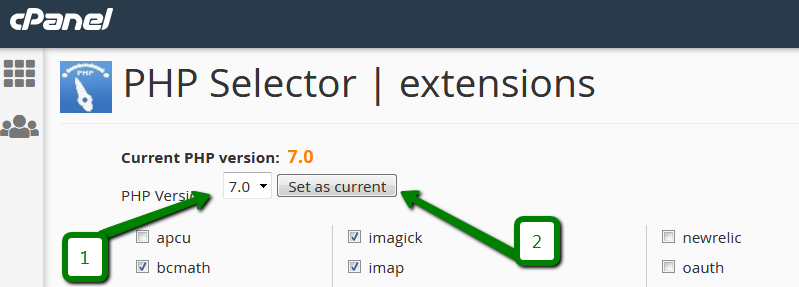
3. This version also requires the following PHP extensions:
- intl
- fileinfo
- mysqli
If they are not already enabled, take a look at the list below to check. Click the Save button when youâ$™ve done so. See below:
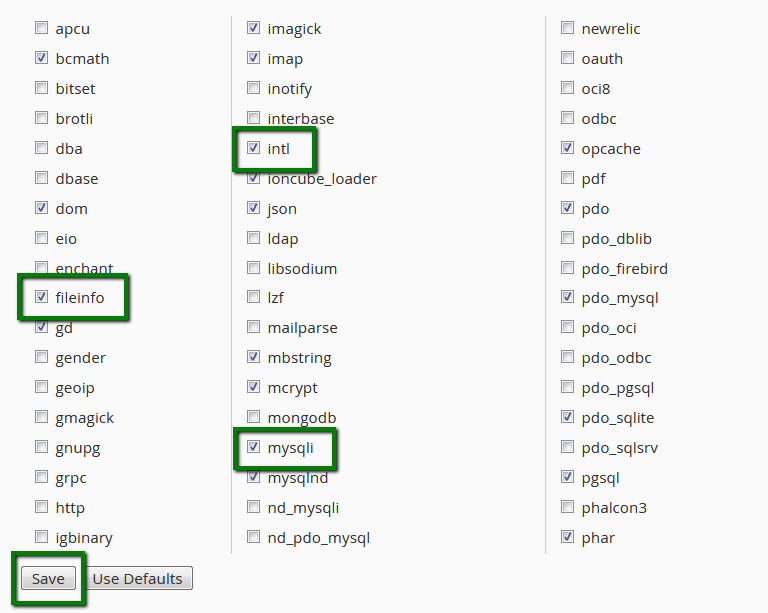
Step 3 - Creating the Database
You need to create a database for your installation, remembering the following details:
Database name
Database user
Database user password
All the related instructions can be found in the guide.
1. In a new browser, open the domain name you have chosen for the installation. You should see the Moodle installation start page. Choose your respective language and click the Next button. See below:
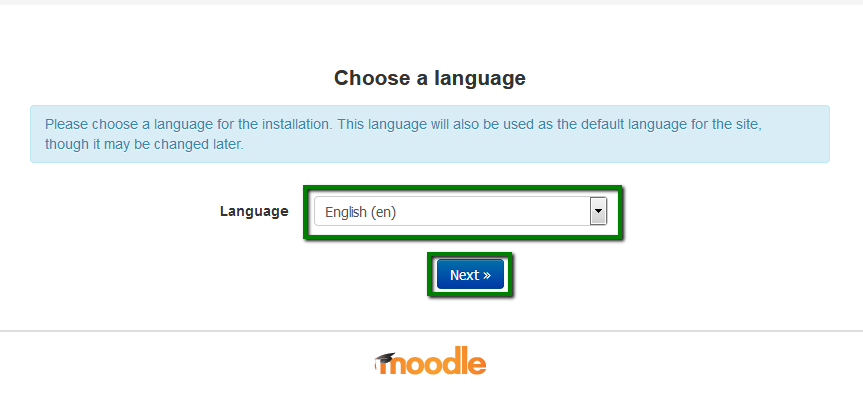


4. On the Database Settings page, enter the database details you already created on Step #3, leaving the other values untouched and click the Next button. See below:
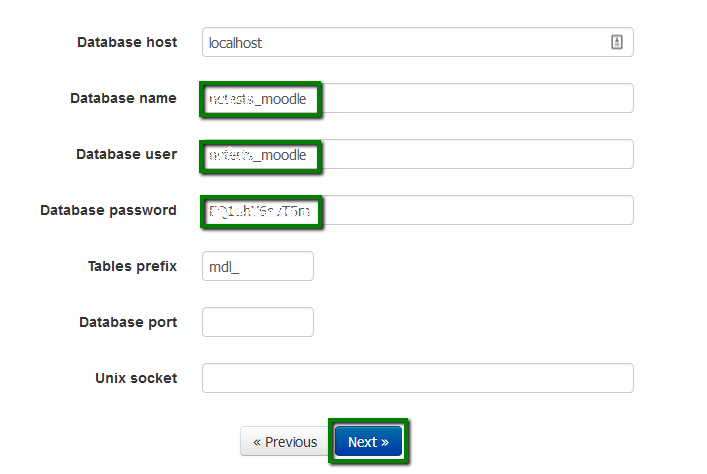
Keep in mind it may take a few minutes for the database setup to finish.
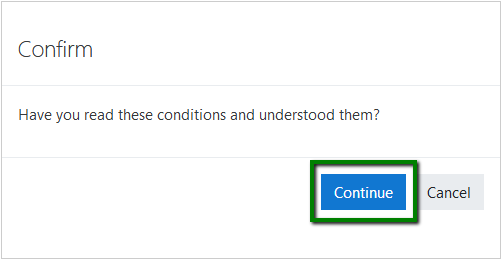
On the next page, you will see a list of server requirements. All of them should be fulfilled, except for the following. See below:

'dbcollation' => 'utf8mb4_general_ci',
to
'dbcollation' => 'utf8_general_ci',
Make sure you save your changes.
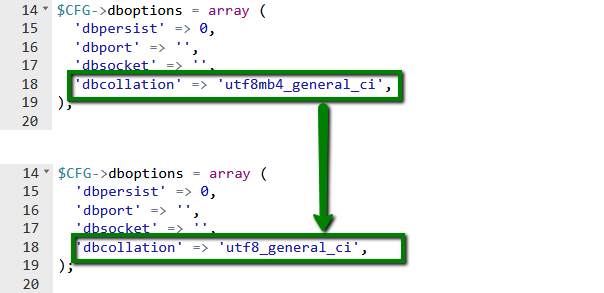


10. It will take a few minutes for the installation of modules to finish. Scroll down the page and click the Continue button to proceed further.
11. You will then be redirected to the page where you will need to enter the administrative details you want to use. Fill them out, scroll down the page, and click the Continue button. See below:
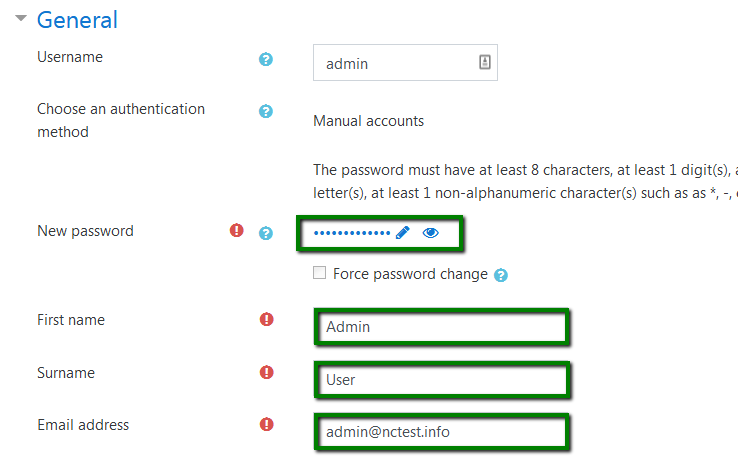
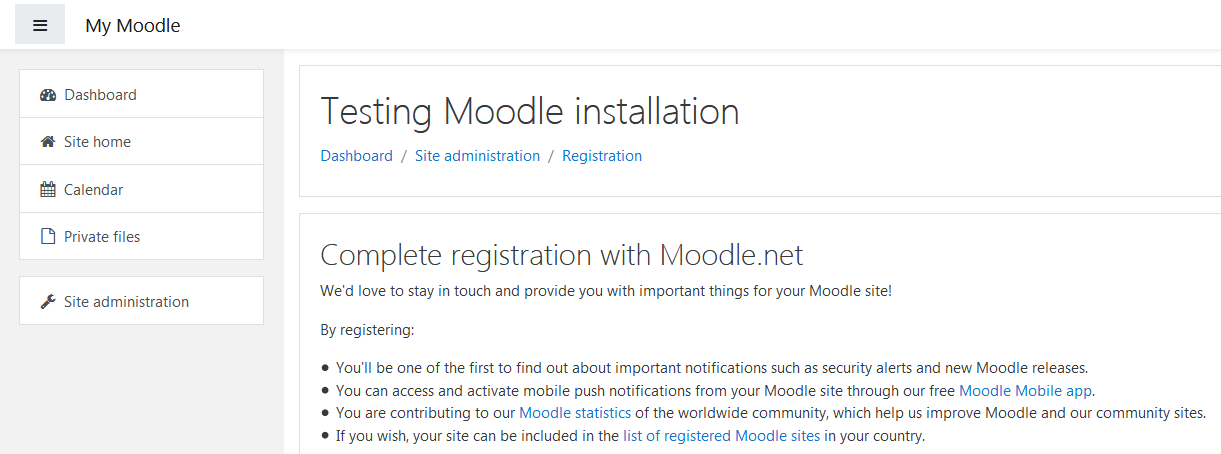
Congratulations! You just successfully installed Moodle.
Categories
- cPanel Question 47
- cPanel Software Management 29
- cPanel Tutorials 13
- Development 29
- Domain 13
- General 19
- Linux Helpline (Easy Guide) 156
- Marketing 47
- MySQL Question 13
- News 2
- PHP Configuration 14
- SEO 4
- SEO 42
- Server Administration 84
- SSL Installation 54
- Tips and Tricks 24
- VPS 3
- Web Hosting 44
- Website Security 22
- WHM questions 13
- WordPress 148
Subscribe Now
10,000 successful online businessmen like to have our content directly delivered to their inbox. Subscribe to our newsletter!Archive Calendar
| Sat | Sun | Mon | Tue | Wed | Thu | Fri |
|---|---|---|---|---|---|---|
| 1 | 2 | 3 | 4 | 5 | ||
| 6 | 7 | 8 | 9 | 10 | 11 | 12 |
| 13 | 14 | 15 | 16 | 17 | 18 | 19 |
| 20 | 21 | 22 | 23 | 24 | 25 | 26 |
| 27 | 28 | 29 | 30 | 31 | ||
Recent Articles
-

Posted on : Sep 17
-

Posted on : Sep 10
-

Posted on : Aug 04
-

Posted on : Apr 01
Tags
- ts
- myisam
- vpn
- sql
- process
- kill
- tweak
- server load
- attack
- ddos mitigation
- Knowledge
- layer 7
- ddos
- webmail
- DMARC
- Development
- nginx
- seo vpn
- Hosting Security
- wireguard
- innodb
- exim
- smtp relay
- smtp
- VPS Hosting
- cpulimit
- Plesk
- Comparison
- cpu
- encryption
- WHM
- xampp
- sysstat
- optimize
- cheap vpn
- php-fpm
- mariadb
- apache
- Small Business
- Error
- Networking
- VPS
- SSD Hosting
- Link Building
- centos
- DNS
- optimization
- ubuntu







